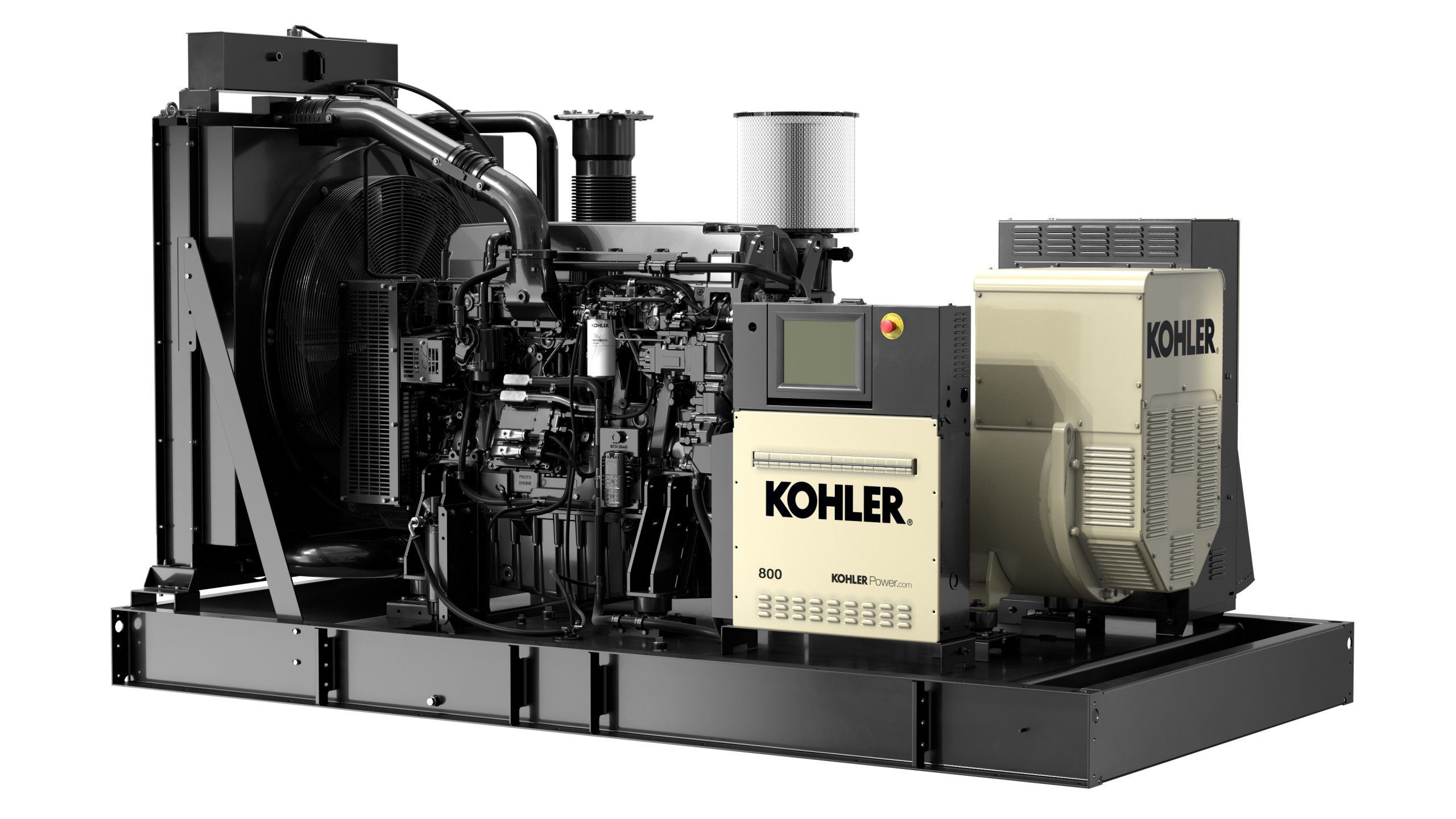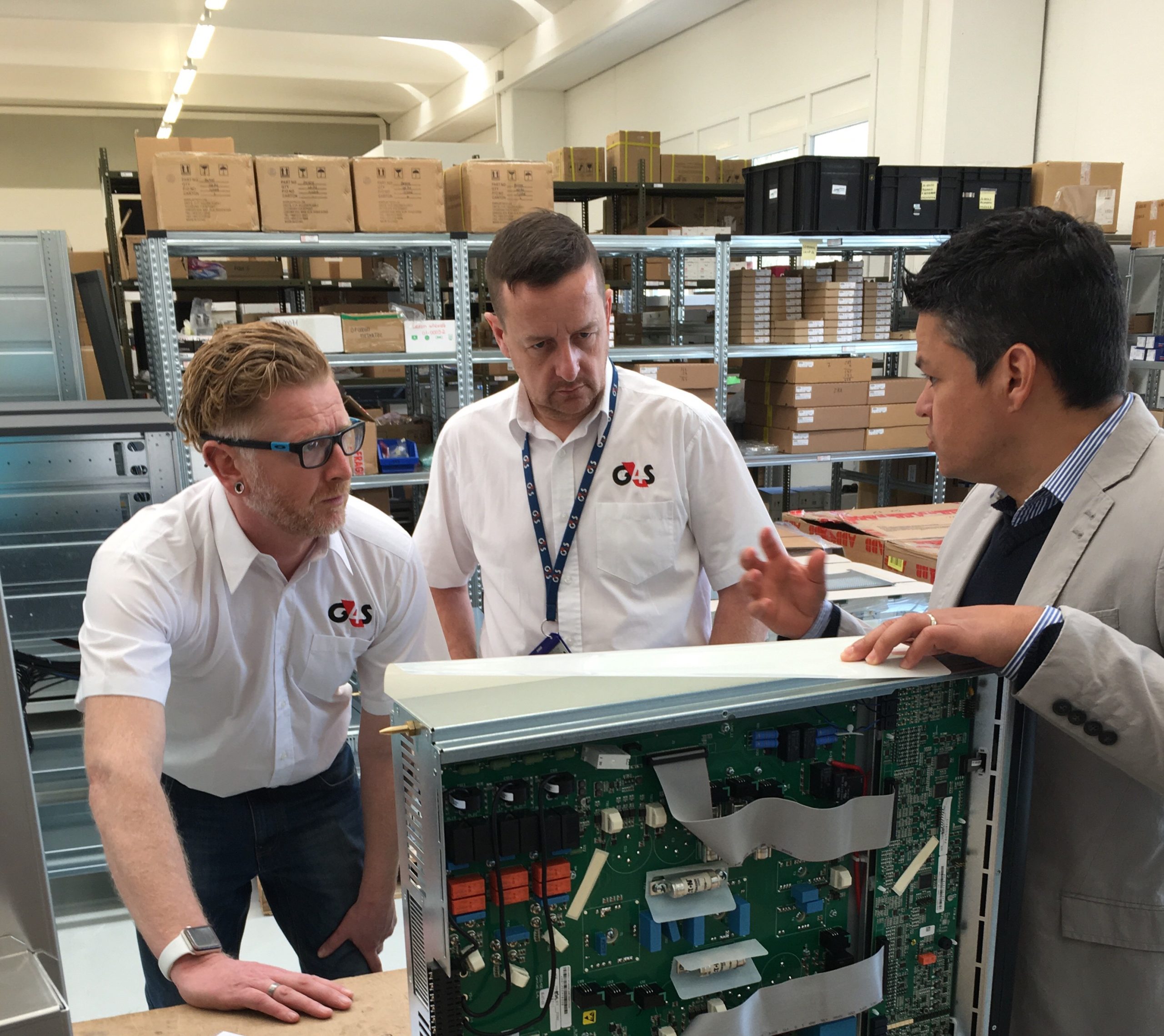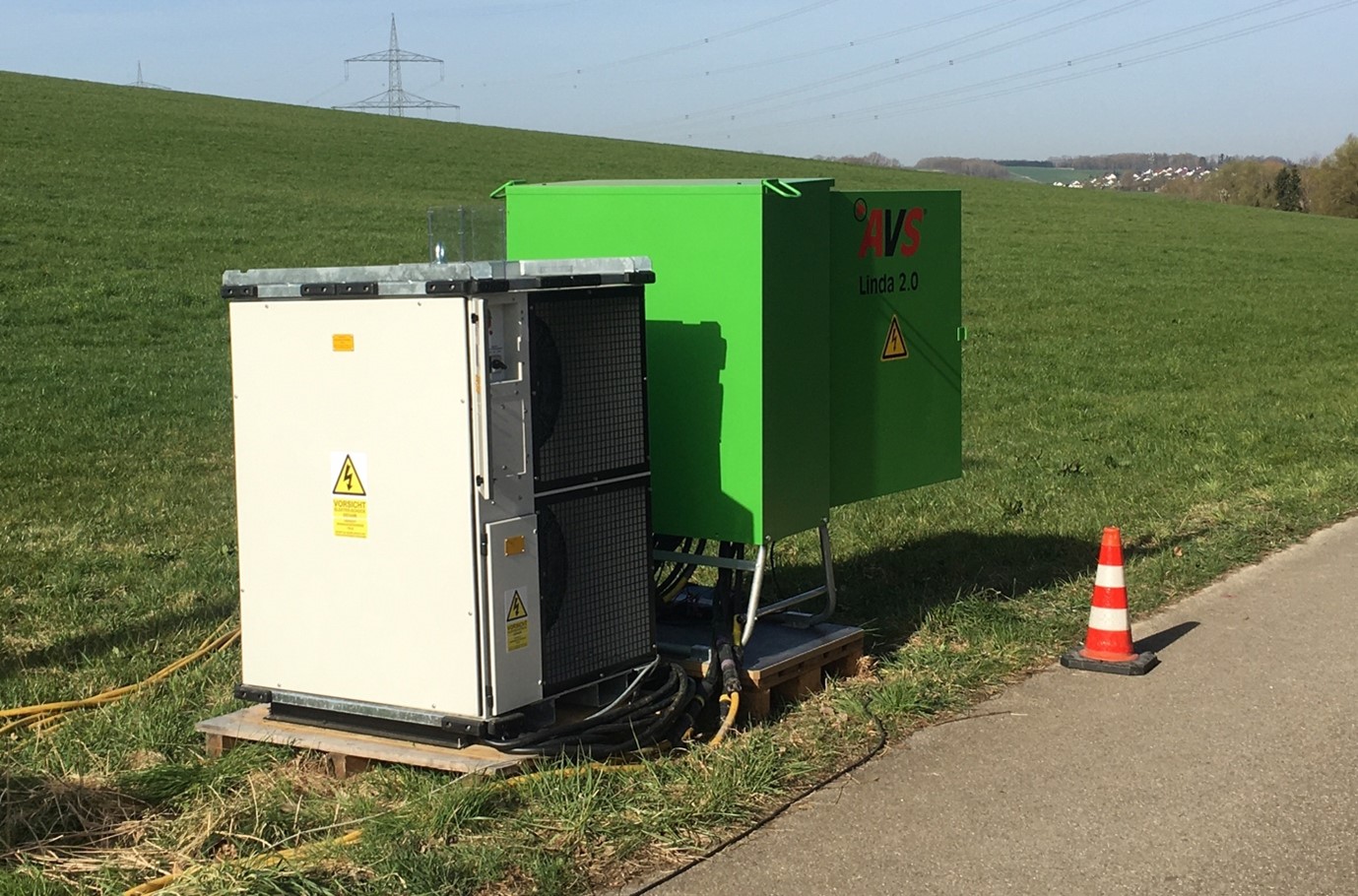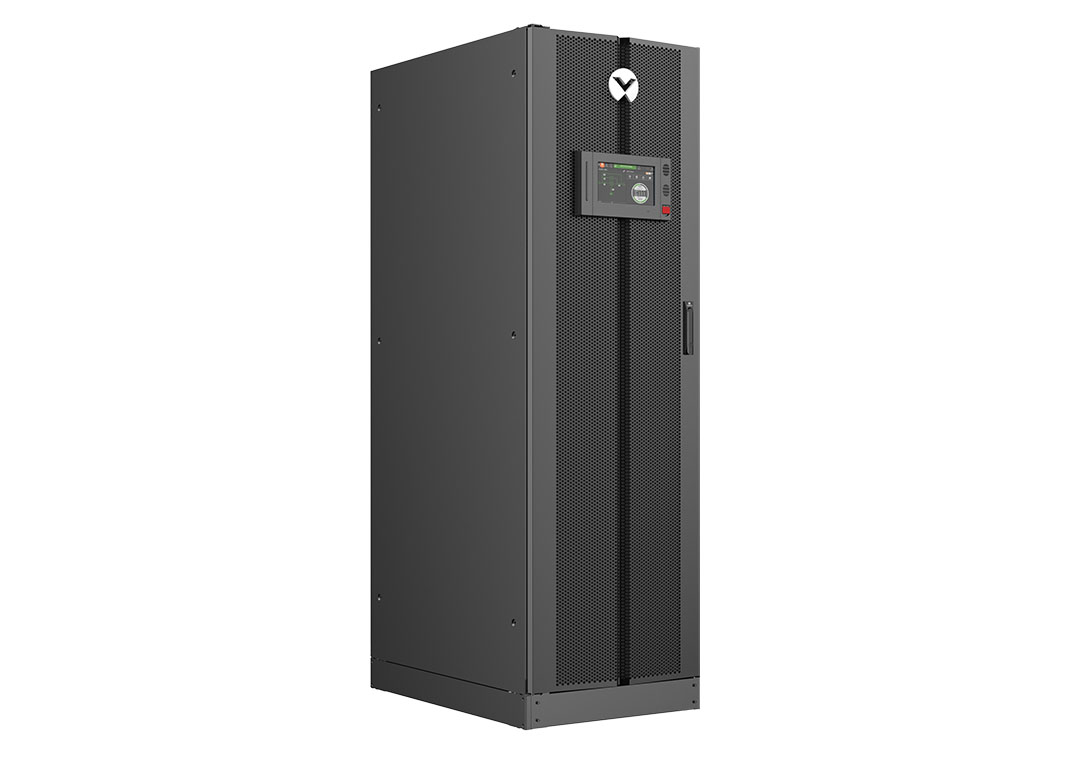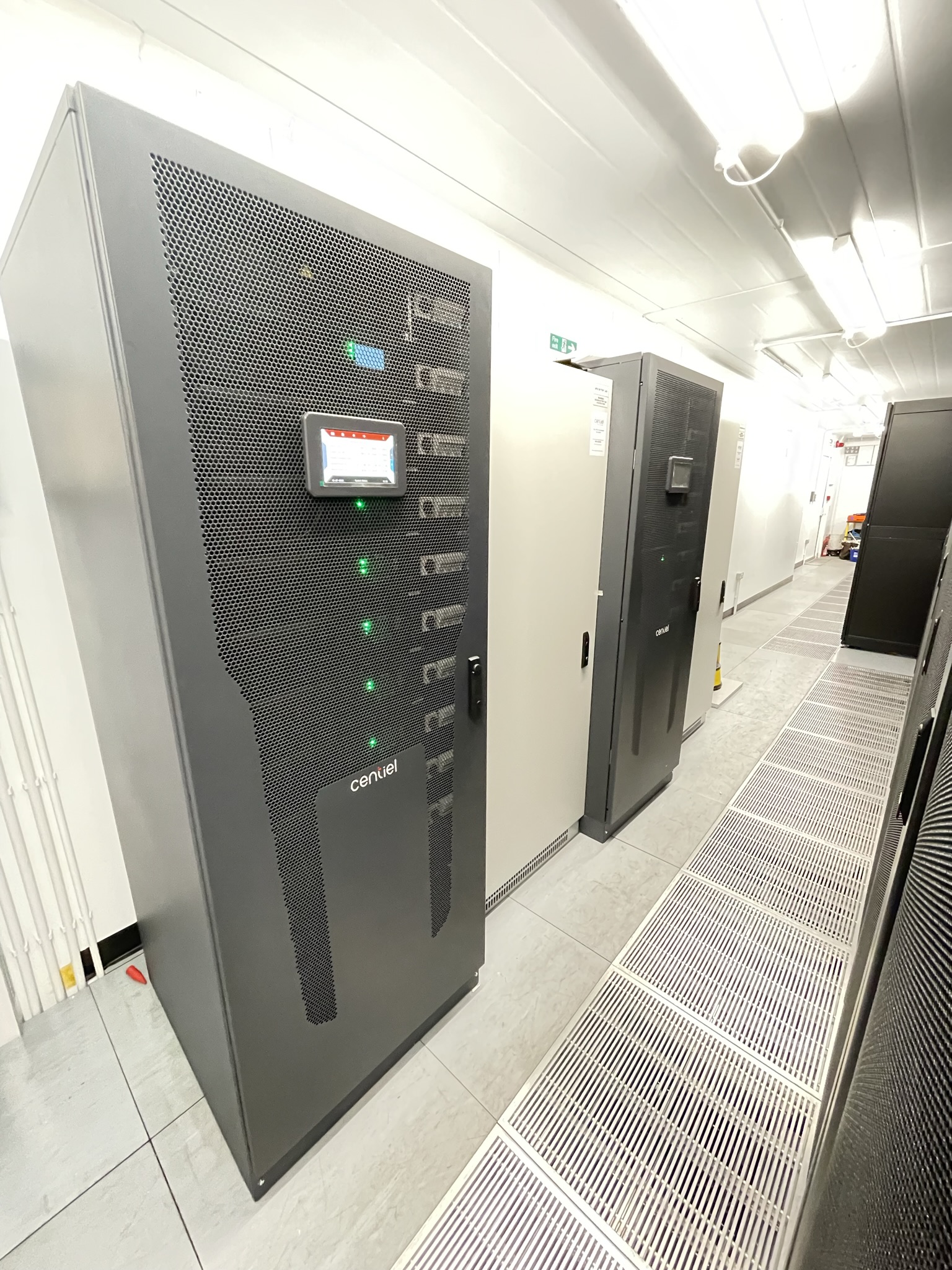Innovations in Data Center Power and Cooling Solutions
Data Centre Infrastructure News & Trends
Innovations in Data Center Power and Cooling Solutions
News
Eaton announces launch of 5P Gen 2 UPS
Intelligent power management company, Eaton, has announced the launch of the Eaton 5P Gen 2 UPS, a compact and more efficient power solution for edge and IT needs.
Delivering more output, security and control than any other device in its class, this new product range also enables fleet management, remote UPS setting and remote firmware upgrades.
The 5P Gen 2 has enhanced power capability and provides up to 1350W, which is 22% more than its predecessor and 33% more than comparable models available on the market, making it ideal for protecting a wide range of applications. Its intelligent design ensures both stable performance and energy savings, while advanced load segment control prioritises critical equipment and optimises battery runtime.
This UPS model features the Eaton ABM+ Advanced Battery Management technology, which extends battery life by up to 50% and allows for accurate battery life prediction and timely replacement alerts powered by machine learning. It also comes with hot-swappable batteries and an intuitive battery replacement wizard via a built-in graphical LCD.
Eaton’s Intelligent Power Manager (IPM2) and Distributed IT Performance Management (DITPM) software enable remote monitoring and management of IT infrastructure, even in hard-to-reach locations, including secure device configuration and firmware updates. The Eaton 5P Gen 2 UPS, together with the cybersecure Gigabit Network Card (included in the Netpack versions), meets stringent cybersecurity standards. Moreover, Eaton’s Brightlayer Software Suite is available for seamless integration with virtualisation environments, ensuring continuous service and data integrity.
Whether customers opt for the compact 1U rack or the tower option, the Eaton 5P Gen 2 UPS fits all space requirements, making it compatible with a variety of setups.
For more from Eaton, click here.
Simon Rowley - 12 June 2024
Data Centre Regulations & UK Compliance Updates
Features
Innovations in Data Center Power and Cooling Solutions
News
Sustainable Infrastructure: Building Resilient, Low-Carbon Projects
How data centres can prepare for 2024 CSRD reporting
by Jad Jebara, CEO of Hyperview.
The CEO of Britain's National Grid, John Pettigrew, recently highlighted the grim reality that data centre power consumption is on track to grow 500% over the next decade. The time to take collective action around implementing innovative and sustainable date centre initiatives is now - and the new initiatives such as the Corporate Sustainability Reporting Directive (CSRD) is the perfect North Star to guide the future of data centre reporting.
This new EU regulation will impact around 50,000 organisations, including over 10,000 non-EU entities with a significant presence in the region. The Corporate Sustainability Reporting Directive (CSRD) requires businesses to report their sustainability efforts in more detail, starting this year. If your organisation is affected, you’ll need reliable, innovative data collection and analysis systems to meet the strict reporting requirements.
CSRD replaces older EU directives and provides more detailed and consistent data on corporate sustainability efforts. It will require thousands of companies that do business in the EU to file detailed reports on the environmental impact and climate-related risks of their operations. Numerous metrics being assessed are still widely analysed within additional EU-wide initiatives. For instance, the Energy Efficiency Directive (EED) requires reporting on two Information & Communication Technologies (ICT) within the CSRD Directive – ITEEsy and ITEUsy – allowing for enhanced measuring and insight into server utilisation, efficiency, and CO2 impact.
Given the anticipated explosion in energy consumption by data centres over the next decade, CSRD will shine a spotlight on the sustainability of these facilities. For example, the law will require organisations to provide accurate data for both greenhouse gases and Scope 1, 2 and 3 emissions.
The essential metrics that data centres will need to report on include:
Power usage effectiveness (PUE) – measures the efficiency of a data centre’s energy consumption
Renewable energy factor (REF) – quantifies the proportion of renewable energy sources used to power data centres
IT equipment energy efficiency for servers (ITEEsv) – evaluates server efficiency, focusing on reducing energy consumption per unit of computing power
IT equipment utilisation for servers (ITEUsv) – measures the utilisation rate of IT equipment
Energy reuse factor (ERF) – measures how much waste energy from data centre operations is reused or recycled
Cooling efficiency ratio (CER) – evaluates the efficiency of data centre cooling systems
Carbon usage effectiveness (CUE) – quantifies the carbon emissions generated per unit of IT workload
Water usage effectiveness (WUE) – measures the efficiency of water consumption in data centre cooling
While power capacity effectiveness (PCE) isn’t a mandatory requirement yet, it is a measure that data centres should track and report on as it reveals the total power capacity consumed over the total power capacity built.
If not already, now is the time to ensure you have processes and systems in place to capture, verify, and extract this information from your data centres. We also recommend conducting a comprehensive data gap analysis to ensure that all relevant data will be collected.
It’s important to understand where your value chain will fall within the scope of CSRD reporting and how that data can be utilised in reporting that’s compliant with ESRS requirements. For example, reports should be machine-readable, digitally tagged and separated into four sections – General, Environmental, Social and Governance.
While the immediate impact of CSRD will be in reporting practices, the hope is that, over time, the new legislation will drive change in how businesses operate. The goal is that CSRD will incentivise organisations such as data centre operators to adopt sustainable practices and technologies, such as renewable energy sources and circular economy models.
Improving sustainability of data centres
Correctly selecting and leveraging Data Centre Infrastructure Management (DCIM) that offers precise and comprehensive reports on energy usage is a paramount step in understanding and driving better sustainability in data centre operations. From modelling and predictive analytics to benchmarking energy performance - data centres that utilise innovative, comprehensive DCIM toolkits are perfectly primed to maintain a competitive operational advantage while prioritising a greener data centre future.
DCIM modelling and predictive analytics tools can empower data centre managers to forecast future energy needs more accurately, in turn helping data centres to optimise operations for maximum efficiency. Modelling and predictive analytics also enables proactive planning, ensuring that energy consumption aligns with actual requirements - preventing unnecessary resource allocation and further supporting sustainability objectives.
Real-time visibility of energy usage gives data centre operators insight into usage patterns and instances of energy waste, allowing changes to be made immediately. Ultimately, eliminating efficiencies faster means less emissions and less energy waste. In addition to enhancing operational efficiency, leveraging these real-time insights aligns seamlessly with emission reduction goals – supporting a more sustainable and conscious data centre ecosystem.
Utilising the right DCIM tools can also reduce energy consumption by driving higher efficiency in crucial areas such as cooling, power provisioning and asset utilisation. They can ensure critical components operate at optimal temperatures, reducing the risk of overheating and preventing energy wastage. In addition to mitigating overheating and subsequent critical failures, utilising optimal temperature tools can also improve the lifespan and performance of the equipment.
The right DCIM tool kit enables businesses to benchmark energy performance across multiple data centres and prioritise energy efficiency – while also verifying the compliance of data centres with key environmental standards and regulations like CSRD. Cutting-edge DCIM platforms also enables data centres to correctly assess their environmental impact by tracking metrics such as power usage effectiveness (PUE), carbon usage effectiveness (CUE) or water usage effectiveness (WUE). These tools facilitate the integration of renewable energy sources - such as solar panels or wind turbines - into the power supply and distribution of green data centres.
As sustainability continues to move up the corporate agenda, expect to see greater integration of DCIM with AI and ML to collect and analyse vast quantities of data, such as sensors, devices, applications and users. In addition to enhancing the ease of data collection, this streamlined approach aligns seamlessly with CSRD emission reduction goals - making compliance with CSRD and similar regulations much easier for data centres.
Taking a proactive approach to the data gathering requirements of CSRD and implementing technologies to support better sustainability practice isn’t just about compliance or reporting; it’s also to incentivise data centre operators towards the adoption of sustainable practices and technologies. Ultimately, data centres that are prepared for CSRD will also be delivering greater value for their organisation while paving the way for a more sustainable future.
Simon Rowley - 29 April 2024
Data Centre Infrastructure News & Trends
Innovations in Data Center Power and Cooling Solutions
News
Centiel launches rapid deployment UPS hire service
Centiel's award-winning UPS innovations are now available to hire on a short or longer-term basis for data centres needing instant power protection during refurbishment, or other facilities such as hospitals which require an immediate, temporary uninterruptible power supply.
Andrew Skelton, Operations Director at Centiel, explains, “We offer flexible, rapid deployment of our industry leading UPS solutions from our standalone and modular ranges from 10kW to 1.5MW. We also have containerised modular UPS solutions for larger projects between 50kW and 1.5MW. Our containerised solutions hire includes electrical installation, integral lighting, fire detection and suppression, cooling, batteries and 24/7/365 support with guaranteed site attendance, making it suitable as a full ‘plug and play’ emergency option or for facilities needing to back up their existing UPS while refurbishment or other works take place.
“Our UPS hire solution can be arranged to suit specific needs at very short notice. Subject to availability, we currently have two 600kW and one 300kW containerised, flexible UPS solutions ready to deploy within 48 hours and we are currently adding to the fleet. We can also parallel them together for sites requiring up to 1.5MW of backup power. The containers can be delivered onto suitably rated hard standing areas to suit disaster recovery situations or planned shutdowns.
“The UPS's arrive fully tested with batteries already charged. We simply deliver the bespoke containerised UPS solution into position, install the top row of batteries and connect the AC input and output cabling via Powerlock connections, so the system is typically up and running within six hours of delivery.”
Routine maintenance is covered by the hire charge for extended hire periods and Centiel’s UPS can remain on site for as long as the facility needs critical power protection. Hiring a UPS may be a tax efficient way to solve an organisation’s short term power protection problems as a purchase comes out of Capital Expenditure (CAPEX), whilst a rental can be set against Operational Expenditure (OPEX).
Centiel’s UPS hire service is available for its standalone UPS PremiumTower and also its three-phase, modular UPS CumulusPower which offers '9 nines' (99.9999999%) availability to effectively eliminate system downtime; class leading 97.1% on-line efficiency to minimise running costs and true 'hot swap' modules to eliminate human error in operation.
Andrew continues, “Our fast deployment UPS's, including our containerised solutions, are ready to go. They are an ideal temporary solution for data centres, hospitals or other facilities needing to provide critical power at short notice or for an economical option to support more planned projects.”
Centiel now protects critical loads for data centres and comms rooms in over 100 countries across five continents.
For more from Centiel, click here.
Simon Rowley - 23 April 2024
Data Centre Infrastructure News & Trends
Data Centres
Innovations in Data Center Power and Cooling Solutions
News
Kohler launches new KD Series industrial generator
Kohler Power Systems, part of Kohler Energy, has expanded its KD Series line of industrial generators with a new model, KD800, designed for 50hz markets. This generator features a new advanced engine (KD18L06) that can also run on Hydrotreated Vegetable Oil (HVO) as a renewable fuel source.
This new model joins a proven series of gensets that continues to provide the highest power density and best fuel consumption at more nodes than competitors between 800-4500 kVa, offering cost savings to users. The new KD unit is designed to power mission-critical applications, including airports, hospitals, and healthcare facilities, water treatment plants and mid-sized data centres.
The KD800 joins Kohler’s industrial generators that are engineered to use HVO fuel. HVO provides a more sustainable alternative to conventional diesel and biofuels. No adaptation is needed and both HVO and diesel can be mixed together. HVO is also highly stable, with no sensitivity to oxidation, so it can be stored long-term. It enables to offset carbon emission by up to 90% by using renewable waste products.
Kohler’s KD Series is designed to deliver extreme durability and ultimate reliability in a variety of emergency and prime applications. KD Series generators are engineered to last, with better fuel economy and a small footprint. When paired with Kohler’s global sales and support network, the KD Series line-up provides an innovation that secures customers’ critical operations. And when service is needed, Kohler has a global dealer and distribution infrastructure consisting of more than 800 facilities offering 24/7 parts availability.
For additional details about the Kohler KD Series range, visit its product catalogue by clicking here.
For more from Kohler, click here.
Simon Rowley - 23 April 2024
Innovations in Data Center Power and Cooling Solutions
News
Don’t compromise on power protection
By David Bond, Chairman, Centiel UK
When we are ill, we consult a doctor, a trusted expert in the human body, to diagnose and appropriately treat the problem. They will also advise on how to best prevent a recurrence of the problem. Hopefully, we don’t listen to “old wives tales” that guarantee an immediate cure.
The same common sense applies with the diagnosis, help and advice for critical power protection. Nobody would knowingly purchase an inferior UPS, but how would they know a good UPS from an inferior one? If you’re not a UPS expert, it’s easy to fall for sales talk and marketing speak, but just like a doctor won’t try and ‘sell’ you unnecessary medication, real UPS experts will act as trusted advisors and will only act in their customers’ best interest. No sales 'spin', just facts and sound advice.
While Centiel’s team of UPS experts don’t swear an hypocritic oath like a doctor does, every Centiel employee signs up to a set of core values which keeps the best interests of customers at the heart of everything they do, namely:
We always behave with integrity
We are honest and open in our business transactions
We treat our customers, suppliers and each other with respect
We constantly strive to improve our customer service
We never compromise on health, safety or environmental matters
Finding the best way to protect critical power is a complex topic. Therefore, Centiel’s expert team act as trusted advisors to all customers, including data centres, hospitals and all IT facilities, to ensure they always have the optimal UPS solution, whilst reducing their Total Cost of Ownership (TCO) and maximising their system availability.
Centiel’s engineers and UPS solutions experts and are not required to 'sell' UPS. Instead they establish long term relationships by offering their wealth of experience and expertise. By taking time to understand the challenges faced, they always provide the best advice in relation to solutions based on best practice.
It's this long-term vision and close relationships with Centiel’s clients which led to the development of its industry-leading UPS solutions. For example, Centiel recently launched StratusPower, which shares all the benefits of the award-winning three phase, true modular UPS CumulusPower - including '9 nines' (99.9999999%) availability to effectively eliminate system downtime; class leading 97.6% online efficiency to minimise running costs; true 'hot swap' modules to eliminate human error in operation – but now also includes long-life components to improve sustainability. StratusPower minimises TCO because of its class-leading efficiency and low maintenance costs and it is fully scalable, so is unlikely be outgrown.
Centiel’s experts help organisations around the world understand TCO calculations and provide best recommendations to protect power from day one and into the future. Armed with this information, informed decisions can be made about the most appropriate option to protect critical power, reduce carbon footprint and maintain the highest level of availability.
So just like you would consult a doctor to maintain your optimal health, when it comes to looking at UPS solutions, don’t compromise. Choose experts who will provide best advice to protect your critical power.
To arrange a discussion or for more information, click here.
Isha Jain - 8 November 2023
Data Centre Build News & Insights
Data Centres
Innovations in Data Center Power and Cooling Solutions
News
Renewables and Energy: Infrastructure Builds Driving Sustainable Power
Sustainable Infrastructure: Building Resilient, Low-Carbon Projects
Pulsant gains recognition for environmental and sustainability initiatives
Pulsant has seen its commitment to environmental and sustainable working practices receive two key industry certifications in recognition of its focus on environmental and sustainability initiatives across its data centre estate and management systems.
Rating in the top 25% of responding businesses, it received a silver medal from EcoVadis, with particular strengths in the area of its environmental practices. This achievement reflects Pulsant's commitment to environmental stewardship and social responsibility. The company has implemented numerous initiatives to reduce its carbon footprint, minimise waste, and promote ethical business practices, including wellbeing and mental health.
Furthering its sustainability credentials, its energy management system has been awarded the respected ISO 50001 certification, giving independent assurance to its effectiveness in improving its energy performance. As an operator of a variety of UK data centres, it is working towards an overall PUE of 1.3 by 2030, and is on track to surpass the 2023 target of 1.53, following from the success of a number of initiatives such as consolidation project at Maidenhead site, cold aisle containment, cooling and UPS infrastructure upgrades, and temperature optimisation.
Commenting on the news, Helen Munro, Head of Environment and Sustainability at Pulsant, notes, "Sustainability is a key priority at Pulsant. We are committed to continuous improvement across all aspects of our activities, both internally and across our wider supply chain. These certifications highlight that our comprehensive policies and programmes are delivering meaningful results. Credit to the teams across our sites and operations across all parts of the business for making it happen."
As the need for improved environmental management intensifies, Pulsant is focused on further minimising its climate impact, with initiatives already underway, including piloting HVO fuelled generators and evolving cooling technologies.
“We are currently ahead of the annual targets we set to work towards our 2050 net zero targets, but well aware that we need to continue to push to find new opportunities to improve our carbon footprint and environmental impact in the years ahead. We all have a part to play in safeguarding the planet and we are aware of the role our organisation needs to play in that,” concludes Helen.
Isha Jain - 7 November 2023
Innovations in Data Center Power and Cooling Solutions
News
Sustainable Infrastructure: Building Resilient, Low-Carbon Projects
Schneider Electric finalises acquisition of EcoAct
Schneider Electric has announced that it has finalised the acquisition of EcoAct SAS (EcoAct), an international leader in climate consulting and net zero solutions headquartered in Paris, France. The completion of the transaction follows consultation with the relevant employee representative bodies and approval from the competent regulatory authorities.
The acquisition represents the coming together of two best-in-class organisations to accelerate business solutions that deliver true value for both climate and clients. EcoAct’s portfolio of net zero and nature-based products and services, including consulting, climate data tools, and carbon offset project development, will expand and accelerate Schneider Electric’s global Sustainability Business, a provider of advisory services in the areas of energy management, energy efficiency, renewable energy and environmental commodity procurement, sustainability and net zero consulting, climate risk, sustainability communications, and reporting and disclosure.
The joining of the two organisations expands Schneider's capabilities to provide end-to-end solutions that lead organisations through the net zero transformation and beyond. The company’s advisory services support the development of sustainability strategy and target setting through to decarbonisation across scope one, two and three, enhanced by its AI-led portfolio of digital and data management tools.
“We have long admired the team at EcoAct, and bringing our two organisations together will help us to accelerate the ability to serve our clients all over the world,” says Steve Wilhite, President, Sustainability Business. “Companies understand the urgency to act but continue to face complexities, when it comes to decarbonisation. I’m confident that our combined best-in-class teams will help our clients to accelerate even faster towards their net zero ambitions.”
“Urgent climate action is at the heart of our mission, and I know we’ve found the right partner in Schneider Electric,” says Stuart Lemmon, CEO of EcoAct. “The company’s own demonstrated commitments to net zero – in its own operations and for its clients – speaks loudly in the market, and our EcoActors are excited to join together with another leading advisory team, putting climate and nature centre stage to accelerate sustainable corporate transformation.”
Isha Jain - 2 November 2023
Innovations in Data Center Power and Cooling Solutions
News
The role of generator maintenance in ensuring power resilience
Until now, renewable energy plants in Germany have not been set up for emergency power supply in the event of a power outage. That is about to change, thanks to the award-winning LINDA research project and Crestchic’s load bank technology, which is a critical part of the solution.
What is the LINDA project?
Funded by the Federal Ministry for Economic Affairs and Energy, the project looks at how renewable energy plants could supply power to a local 'island' grid in a decentralised way in the event of a power failure. The project, Local Island Grid Supply and Accelerated Grid Reconstruction, with Decentralised Generation Plants in the Event of Large-scale Power Outages (or the more simple 'LINDA'), seeks to explore, test and implement ways of making power generation systems use renewable energy sources for emergency power supplies.
In 2018, phase one of the project, which involved partners from across academia and industry, including the Augsburg University of Applied Sciences, the Technical University of Munich, LEW Verteilnetz and LEW Wasserkraft, and KIMA automation, won the ISGAN Award (International Smart Grid Action Network) and the Bavarian Energy Prize.
The project included the development of a new emergency generator that successfully integrated renewable decentralised power generation systems, including photovoltaic systems, hydroelectric power plants and a biogas plant, into an independent island grid. In the event of a power failure, the system was designed to supply a local grid with electricity power from existing renewable energy sources.
Emergency power - limitations of the current approach
Historically, emergency power generators have been operated in such a way that power failures can result in a temporary lapse in supply while the generator kicks in. As well as causing momentary outages and fluctuations in supply, these backups are usually supplied by diesel generators. With the new approach, the system is designed to provide a continuous supply in the event of a power failure, using power from multiple decentralised systems, and crucially, favouring renewables as a backup power source.
In pilots of the system, LINDA was able to guarantee the uninterrupted power supply of households in the test communities. This was done without costly retrofitting of the current systems, providing an important building block for the energy transition and improved security of supply.
LINDA 2.0 - automating backup power
In the second phase of the project, LINDA 2.0, the research team is developing a supply concept with battery storage and a diesel generator to provide an additional backup power supply. As well as providing a backup, the system is being designed to automatically balance the fluctuating power generation from decentralised systems and the energy load itself. As well as ensuring a stable and secure power supply without interruptions, the automation will enable the system to shift into emergency mode remotely, without the need for staff to be on site.
Bespoke loadbank solution helps to balance frequency
In order to automate the system, AVS - a German blackout management specialist that provides generators and grid stabilisation systems to a range of industries - worked with the team at Crestchic Loadbanks to create a fully automatic hybrid frequency-controlled power control for generators up to 1300kVA.
Dubbed AVS Greenomic, the solution allows the system to prioritise drawing on renewable energy, for example, CHP, wind power or photovoltaic systems, in order to provide backup power in a blackout scenario, allowing diesel fuel consumption to be reduced by up to 80%. The load bank itself provides a stability of voltage and frequency when switching between different power sources, and maintains a constant 20% load on the generator. Any oversupply of energy is also consumed in a controlled manner, helping to balance the power generation system and smooth out any frequency imbalances.
Mike Derbyshire, European Area Sales Manager at Crestchic, explains, “We’ve worked with AVS for a number of years, so were delighted to collaborate with them on a bespoke solution that would meet the requirements of the LINDA project. Our standard loadbanks and controllers were adapted to allow AVS to add their own control system, and we added additional fuse protection, an interface between the loadbank and the Greenomic assembly and the power connections themselves, all of which enables the system to balance the frequency and ensure and reliable and stable supply. It’s a high-profile project and we’re pleased to have been able to use our technical experience to support and enable the project goals.”
Isha Jain - 30 October 2023
Data Centres
Innovations in Data Center Power and Cooling Solutions
News
Vertiv launches UPS for edge and mid-sized applications in EMEA
Vertiv has introduced the Vertiv Liebert APM2, a new energy efficient and scalable power solution to its uninterruptible power supply (UPS) systems portfolio.
The Liebert APM2 is compatible with lithium-ion (Li-ion) and VRLA batteries, and features a compact design that can scale from 30kW to 600kW in a single unit. It offers significant energy savings as compared to less efficient alternatives, and can also parallel with up to four matching units for additional capacity or redundancy. It is a CE certified UPS system available in 400V in Europe, the Middle East, Africa, Latin America, and Asia.
To satisfy the increasing power needs of edge computing applications, as well as the constrained space typical of these sites, it delivers a greater power output in a smaller footprint than similar capacity solutions, with the models requiring up to 45% less space than the predecessor UPS, Vertiv Liebert APM.
The Liebert APM2 operates with high energy efficiency in all modes, up to 97.5% in double-conversion mode; up to 98.8% efficiency when operating in dynamic online mode, which draws power through the bypass line and uses the inverter for balanced output and as an active filter; and up to 99% when operating in ECO mode, which takes advantage of stable grid input conditions to leverage the bypass line. All modes are automated based on user preferences.
The intelligent paralleling feature facilitates load sharing among multiple power modules, even across multiple units. This enables balanced unit runtime and offers automatic failover for enhanced system availability. Intelligent paralleling has also been shown to contribute to energy efficiency.
“Vertiv has introduced, in Liebert APM2 and other UPS systems, enhancements that improve operational efficiency and can contribute to a reduced data centre PUE, while also maintaining system availability,” says Giovanni Zanei, Senior Director, AC Power Global Offering and EMEA Business Leader at Vertiv. “In particular, the dynamic online feature, built on a robust global platform launched in 2018, enhances the already impressive UPS efficiency and has been adopted by energy and availability conscious customers, including many colocators.”
Isha Jain - 3 October 2023
Data Centres
Innovations in Data Center Power and Cooling Solutions
News
Sustainable Infrastructure: Building Resilient, Low-Carbon Projects
Centiel supports Sure’s data centres on net zero path
Centiel has completed a project to deploy its award-winning 4th generation, three-phase, modular UPS system CumulusPower in three of Sure’s Tier III data centres on Guernsey.
Sure’s data centres on the Channel Islands keep some of Europe’s largest organisations’ critical data safe and secure in a location outside of mainland UK and Europe.
The upgrade to legacy equipment in data halls four, five and eight this year to CumulusPower has seen the whole facility convert to the latest technology, which offers significantly higher resilience and availability (nine-nines 99.9999999% which equates to milliseconds per year) than previously, in addition to achieving significant energy savings, costs and reducing carbon footprint. Due to the true modular nature of CumulusPower, it is highly efficient, meaning it runs at 97% efficiency compared with <80% for the previous UPS.
Simon Roger, Facilities Manager, Sure, comments, “We chose Centiel’s CumulusPower as the leading power protection technology on the market.
“I am pleased to say that the UPS replacements in data centres four and five are now complete with no more switching events required and the change requests are both closed. We have seen the predicted instant power savings equating to an estimated 20-30% approximately with the current IT load. The UPS are also uber reliable and take up less space and we have saved around seven racks on this installation which can be used for clients.”
Due to the location of the Channel Islands, trained engineers usually need to fly to the islands to complete necessary maintenance work. CumulusPower’s modules can be ‘hot/safe swapped’ in a running load, therefore, Centiel has also trained Sure’s engineers in first level response. Sure’s team can now complete basic monitoring, diagnostics and maintenance of the UPS.
Simon continues, “CumulusPower is unique in the market because it enables UPS modules to be swapped safely by our trained team without switching the UPS off. This safe-hot-swap functionality means even if we need to replace a module and send it for repair, we do not experience any downtime, ensuring maximum availability for our clients.”
Isha Jain - 3 October 2023

Head office & Accounts:
Suite 14, 6-8 Revenge Road, Lordswood
Kent ME5 8UD
T: +44 (0)1634 673163
F: +44 (0)1634 673173



